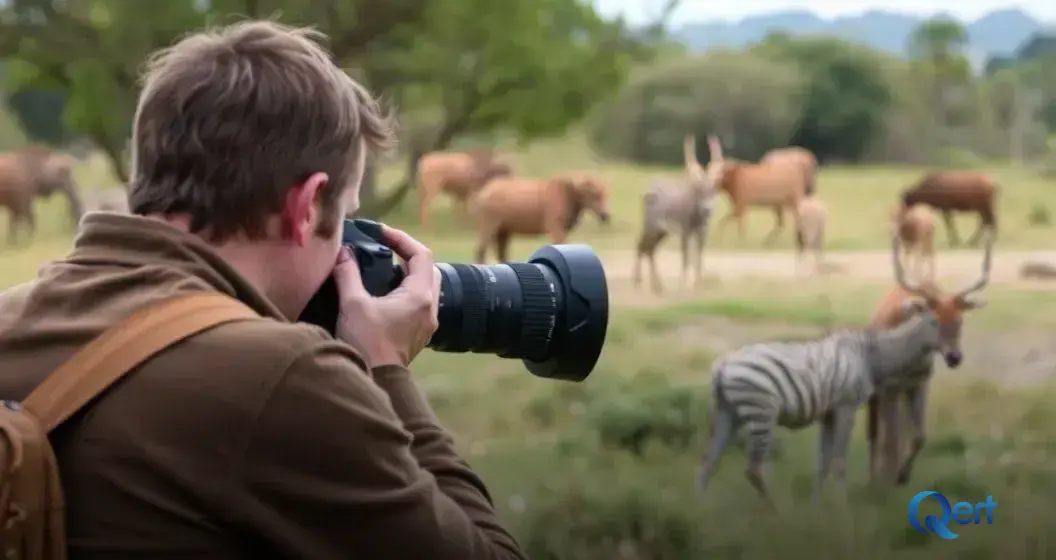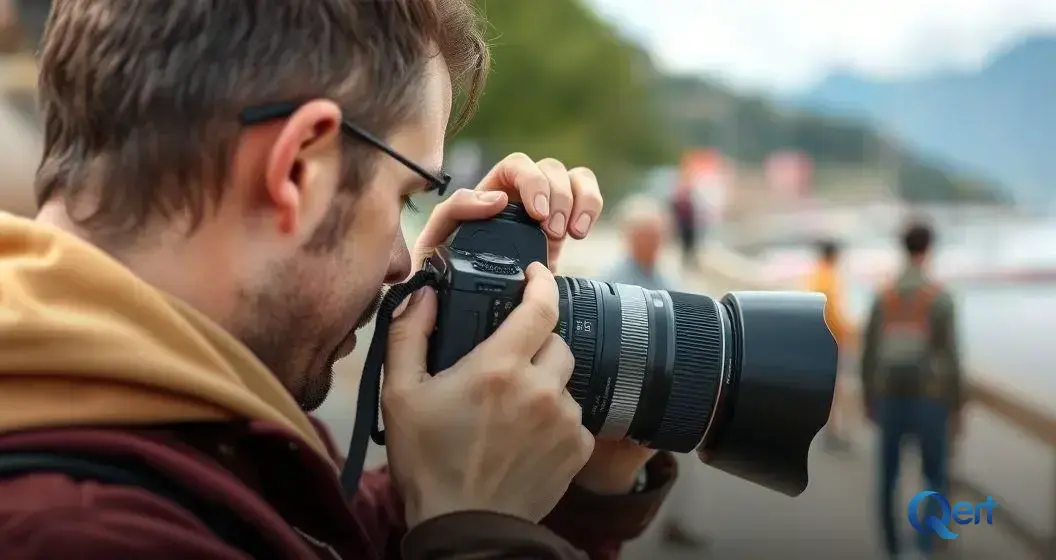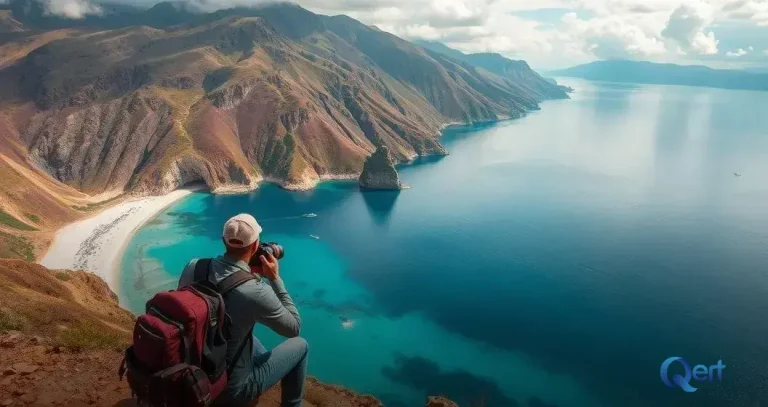ADVERTISEMENT
Travel photography tips can transform your journeys into vivid memories. With the right techniques, you can capture the beauty of the world around you. From landscapes to street scenes, every moment tells a story.
Whether you are a beginner or looking to improve your skills, understanding your gear and surroundings is crucial. Discover how the best photographers create magic with their cameras and unveil hidden gems.
Keep reading to discover essential tips that will elevate your travel photography game!
Essential Gear for Travel Photography
For travel photography, having the right gear is essential to capture stunning moments. A quality camera is your most important tool. Consider using a DSLR or mirrorless camera for better image quality. These cameras offer great flexibility and superior controls compared to smartphones.
Besides the camera, don’t forget about lenses. A versatile lens can make a big difference in your shots. A wide-angle lens is perfect for landscapes, while a zoom lens lets you capture wildlife from a distance. Each lens serves a unique purpose, so choose wisely based on your travel plans.
Lastly, have extra batteries and memory cards on hand. When exploring new places, you want to be ready to take pictures at any moment. Having enough power and storage ensures you won’t miss capturing those unforgettable experiences during your adventures.
How to Take Stunning Landscape Shots
To take stunning landscape shots, start by choosing the right time of day. Early mornings and late afternoons offer the best natural light. This golden hour light adds warmth and helps colors pop in your photos. Plan your outings around these times for the most beautiful results.
Next, use the rule of thirds to compose your shots. Imagine your image divided into nine equal parts with two horizontal and two vertical lines. Place the key elements of your landscape along these lines or at their intersections. This technique makes your photos more balanced and interesting.
Finally, don’t be afraid to explore different angles. Moving around can change the scene completely. Try finding unique vantage points or getting low to the ground. Experimenting with perspective will help you capture stunning landscapes that tell a compelling story.
Tips for Capturing Wildlife on the Go

Capturing wildlife on the go requires patience and quick thinking. First, always be ready with your camera. You never know when an animal will appear. Keep your camera settings adjusted for fast movement, so you’re prepared to shoot at a moment’s notice. This way, you won’t miss that perfect shot.
Second, learn to observe and understand animal behavior. Spending time watching wildlife can help you predict their movements. This knowledge allows you to position yourself better for great photos. Stay quiet and still, as this will make you less noticeable to the animals.
Lastly, use the zoom feature on your camera to capture details from a safe distance. Getting too close can scare animals away. Zooming in allows you to get stunning shots without disturbing them. This way, you can enjoy wildlife photography while respecting nature.
Mastering Street Photography Techniques
Mastering street photography techniques starts with being aware of your surroundings. Take time to observe the scene before you start shooting. Look for interesting moments, lighting, and shadows. Street photography is about capturing life as it happens, so patience is key.
Another important technique is to get close to your subjects. This not only makes your photos more engaging but also tells a story. Don’t be afraid to approach people or situations, but always be respectful. A friendly attitude can help you create genuine interactions that lead to stunning images.
Lastly, practice shooting in different conditions. Experiment with light, angles, and compositions. Each street has its own unique vibe, and exploring various settings will improve your skills. The more you practice, the better you’ll become at telling stories through your street photographs.
Best Times for Natural Light
The best times for natural light in photography are during the golden hour, which happens shortly after sunrise and before sunset. During these times, the sunlight is soft and warm, creating beautiful colors in your photos. This lighting helps bring out the details and enhances the overall mood of your images.
Another great time for capturing natural light is during the blue hour. This occurs just before sunrise and just after sunset when the sky turns a deep blue and streetlights flicker on. This magical time can add a unique and enchanting quality to your photographs, giving them an artistic feel.
Lastly, overcast days can also provide excellent lighting for photography. The clouds act like a giant softbox, diffusing the sunlight and eliminating harsh shadows. This soft light is perfect for capturing colors and details in your subjects, making them pop without too much contrast.
Editing Tips for Travel Photos

Editing travel photos can greatly enhance your images. Start with simple adjustments like brightness and contrast. Brightening a photo can make the colors pop and create a more inviting scene. Don’t be afraid to increase contrast to highlight details, especially in landscapes and architecture.
Next, consider cropping your images to improve composition. Sometimes, removing distractions from the edges of your photo can focus the viewer’s attention on the main subject. Use the rule of thirds as a guide when cropping, ensuring your subject is well-placed within the frame.
Lastly, applying filters can give your travel photos a unique style. Explore different filters but use them sparingly to maintain a natural look. The goal is to enhance the beauty of the scene without making it look overly edited. Experiment with various settings until you find a style that represents your vision.
How to Tell a Story Through Images
Telling a story through images is about capturing moments that connect. Start by thinking about the message you want to share. What emotions are you trying to evoke? Consider the subjects in your photos – their expressions, actions, and environment. Each detail contributes to the overall story.
Composition plays a key role in storytelling. Use framing, leading lines, and angles to guide the viewer’s eye. These techniques help build a narrative within your image. For instance, a photograph of a child playing in a park can convey joy, while a picture of an empty street at sunset might reflect loneliness.
Lastly, consider the importance of a series of images. A single photo can tell part of a story, but a collection can provide depth. Think about how each image relates to the others. Together, they create a fuller picture of your experience, allowing viewers to feel as if they were there with you.
Using Local Culture in Your Photography
Using local culture in your photography adds depth and meaning to your images. Start by exploring the traditions and customs of the place you are visiting. Attend local festivals or visit markets where you can find unique items and people. These settings often showcase the heart of the culture and create beautiful photographic opportunities.
Next, focus on capturing the everyday life of the locals. Take candid shots of people engaged in daily activities, like cooking, crafting, or working. These moments tell powerful stories about the community and help viewers connect with the culture. Always be respectful and ask for permission when taking portraits.
Additionally, consider incorporating traditional clothing and local architecture into your photographs. These elements can provide context and highlight the uniqueness of the culture. By combining various aspects of local life, your photography can tell a richer story and show the beauty of cultural diversity.
Avoiding Common Travel Photography Mistakes

Avoiding common travel photography mistakes starts with understanding your camera settings. Many photographers forget to adjust their settings according to the environment.
For example, if you’re shooting in bright sunlight, ensure your exposure is set correctly to avoid washed-out images. Take time to familiarize yourself with your camera’s features before your trip.
Another mistake is not paying attention to the background in your photos. A cluttered or distracting background can take away from your main subject. Always glance around to check for unwanted items or distractions that might ruin your shot. If your background is busy, try changing your angle or viewpoint.
Lastly, don’t overlook the importance of telling a story through your images. Simply capturing a scene is not enough; aim to convey emotions and experiences. Try to shoot moments that highlight culture, people, or the environment. This approach makes your photos not just beautiful but also meaningful and memorable.
Travel photography is about capturing the beauty and essence of different places. To do this effectively, you first need to be observant.
Look for unique details and moments that tell the story of the location. Whether it’s a local market, a scenic view, or a cultural event, being aware of your surroundings helps you capture stunning images that reflect the spirit of the place.
Next, experiment with different perspectives. Instead of taking the typical shot, try to find angles that are less common. Get high up for a bird’s-eye view or low to the ground for dramatic shots of your subjects. By changing your viewpoint, you can discover new and interesting compositions that make your travel photography stand out.
Finally, always be ready to capture spontaneous moments. Some of the best travel photos come from unexpected situations. Keep your camera close and be prepared for anything.
A stunning sunset, a joyful interaction between locals, or a sudden change in weather can create incredible photography opportunities. Always stay alert to the world around you to capture those unforgettable moments.
Don’t miss our article on Train Travel Europe and discover tips to explore the continent efficiently, enjoy scenic routes, and make your journeys comfortable and memorable.







